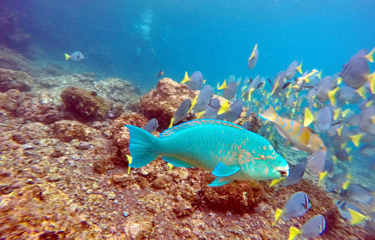Ecuador will increase the area protecting the Galapagos Marine Reserve by 60,000 square kilometers, Ecuador President Guillermo Lasso announced at the United Nations COP26 climate summit taking place in Glasgow, Scotland.
The reserve will grow nearly 50 percent in size from its current 130,000 square kilometers, Lasso said. Ecuador’s newly created reserve would expand northward to include the Cocos Ridge and would completely ban industrial fishing in the reserve, as well as subsistence fishing in some areas. The move would be financed by a "debt-for-conservation swap," according to Lasso, whereby Ecuador’s external debt could be forgiven in exchange for local investment in conservation programs. He did not provide further information. The South American nation’s external debt is nearly USD 46 billion (EUR 39.7 billion), equivalent to 45 percent of the country’s GDP.
“We have a historic announcement for our country and the world. It has to do with the Galapagos Islands and its surrounding waters, a jewel of biodiversity, and a true living laboratory," he said. "After a process of dialogue, we have reached a consensus among all the sectors involved to establish a new reserve, which will not only strengthen the protection of its biodiversity, but also our fight against climate change."
According to UNESCO, the United Nations educational and cultural agency, the Galapagos Islands are one of the places most vulnerable to the effects of climate change. The Galapagos Marine Reserve is also one of the richest areas for marine life and a hotbed of life for the entire planet, yet it has been impacted by illegal, unreported, and unregulated (IUU) fishing. In July 2020, around 300 mostly Chinese-flagged ships began fishing near the exclusive economic zone around the Galapagos. For several months, the fleet continued to fish in the seas around South America, on the border of the exclusive economic zones of Peru, Chile, and Argentina.
In response, at the end of 2020, Ecuador signed an agreement with Canada to employ cutting-edge technology and satellite data to locate and track dark vessels – ships whose location devices are switched off to evade monitoring, control, and surveillance by authorities – in real time. The technology was donated by Canada to Ecuador in a bid to contribute to the preservation of the Galapagos Marine Reserve.
In March 2021, a leaked document originating from the U.S. Department of Homeland Security’s Office of Intelligence and Analysis recommended the creation of a multilateral coalition with South American nations, led by the U.S., to challenge China's IUU practices.
Photo courtesy of Angela N. Perryman/Shutterstock







